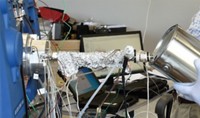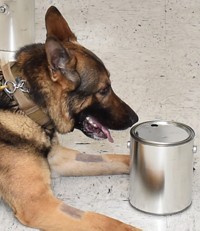Advertisement
Grab your lab coat. Let's get started
Welcome!
Welcome!
Create an account below to get 6 C&EN articles per month, receive newsletters and more - all free.
It seems this is your first time logging in online. Please enter the following information to continue.
As an ACS member you automatically get access to this site. All we need is few more details to create your reading experience.
Not you? Sign in with a different account.
Not you? Sign in with a different account.
ERROR 1
ERROR 1
ERROR 2
ERROR 2
ERROR 2
ERROR 2
ERROR 2
Password and Confirm password must match.
If you have an ACS member number, please enter it here so we can link this account to your membership. (optional)
ERROR 2
ACS values your privacy. By submitting your information, you are gaining access to C&EN and subscribing to our weekly newsletter. We use the information you provide to make your reading experience better, and we will never sell your data to third party members.
Analytical Chemistry
Nanomaterial Sensors Detect Traces Of Explosives
Preliminary tests pick up TNT in parts-per-quadrillion range
by Carmen Drahl
June 30, 2014
| A version of this story appeared in
Volume 92, Issue 26
Any technique for ferreting out explosives needs to meet a few requirements. It must be sensitive, ideally capable of detecting trace amounts in air. It must also exhibit the utmost accuracy, to distinguish a dangerous molecule from a related but innocuous one. With those principles in mind, Fernando Patolsky of Israel’s Tel Aviv University and colleagues have developed a nanoscale device array that can fingerprint two classes of explosives, some down to the parts-per-quadrillion concentration range (Nat. Commun. 2014, DOI: 10.1038/ncomms5195). Patolsky’s multi-institution team combined a few established concepts to build the chip. It contains silicon nanowires, which change their electrical properties in response to tiny amounts of chemicals adsorbing on their surface. In addition, various regions of the chip have different chemical modifications. These lead to better discrimination between explosives and related molecules. For instance, the array can tell TNT from a closely related compound called musk ketone, Patolsky points out. The device also detects other nitro-group-containing explosives, and peroxide-based explosives such as triacetone triperoxide (TATP), in air samples. The team now hopes to conduct field tests to learn more about the nanosensors’ performance.





Join the conversation
Contact the reporter
Submit a Letter to the Editor for publication
Engage with us on Twitter